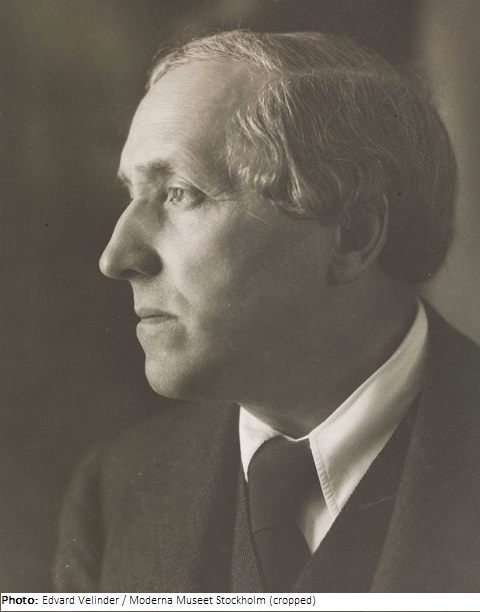Carl Milles

Biographical information
| Roles | Referee |
|---|---|
| Sex | Male |
| Full name | Carl•Milles |
| Used name | Carl•Milles |
| Other names | Carl Emil Wilhelm Andersson |
| Born | 23 June 1875 in Lagga, Knivsta, Uppsala (SWE) |
| Died | 19 September 1955 (aged 80 years 2 months 26 days) in Lidingö, Stockholm (SWE) |
| NOC |  Sweden Sweden |
Biography
Carl Milles was first trained as a cabinetmaker and woodcarver. In 1895, he began his studies at the Stockholm Technical School. From 1897 he attended the Académie Colarossi and the École des Beaux Art in Paris and became a student of Auguste Rodin (1840-1917). In 1900 he changed his birth name from Andersson to Milles.
From 1904 Milles lived in Munich, where he married the painter Olga Granner (1874-1967). In 1906 he returned to Stockholm and became a member of the Academy of Arts. Two years later, on the island of Lidingö in the Stockholm archipelago, he built his studio Millesgården, which is now a museum. In 1920-31 he taught as a professor at the Academy of Art in Stockholm.
He then went to the USA and took up a professorship at the Cranbrook Academy of Art near Detroit. In 1945 he took U.S. citizenship, but from 1951 he mainly lived in Rome. In 1947 he was elected to the American Academy of Arts and Letters. In 1940 he was made an honorary member of the Royal Academy in London, and in 1953 he received an honorary doctorate from the University of Stockholm.
Milles was one of Sweden’s most prolific sculptors and was best known for monumental works and fountain installations. Initially, he took his guidance from his teacher Rodin. In 1901, he had his breakthrough with the design of a bronze monument to the Swedish regent Sten Sture (1440-1503), erected south of Uppsala in 1925.
From 1902 onwards, a growing stylization was evident in Mille’s style. Until 1913 he worked mainly on animal sculptures. In addition, he created portraits such as busts, half figures, and statues. He liked to work in connection with architecture and designed monuments, facade motifs, stair pillars, and portal ornamentation. For the new building of the Dramatic Theater in Stockholm in 1903-08, he designed, among other things, facade ornamentation and, in collaboration with Gottfrid Larsson (1875-1947), the crowning sculptural group.
Milles increasingly began to follow Antoine Bourdelle and Aristide Maillol, for example. He gradually developed an independent archaizing style that clearly showed ancient Greek tendencies. In the following years, he designed numerous fountain installations. For the city anniversary of Gothenburg in 1923 he created in bronze the Poseidon fountain on the central Götapladsen. In 1926-36, Milles designed the Orpheus Fountain in bronze in front of the Concert Hall in Stockholm. He also designed many sculptures in a suspended state on a high pedestal, e.g. Guds hand in bronze in Eskilstuna in 1949. Furthermore, he was involved in the design of numerous medals.
The last sculpture by Milles to be completed was his approximately 23-meter-high work Gud Fader på himmelsbågen (God the Father on the Arch of Heaven). It was not until 1995, forty years after Milles’ death, that American sculptor Marshall M. Fredericks (1908-1998), a long-time collaborator, completed the sculpture in the harbor of Nacka Strand near Stockholm.
After being a jury member in Paris in 1924, he was again appointed to the 1932 Los Angeles Olympics during his stay in the United States.
Referee
| Games | Sport (Discipline) / Event | NOC / Team | Phase | Unit | Role | As | |
|---|---|---|---|---|---|---|---|
| 1924 Summer Olympics | Art Competitions |  SWE SWE |
Carl Milles | ||||
| Sculpturing, Open (Olympic) | Final Standings | Judge | |||||
| 1932 Summer Olympics | Art Competitions |  SWE SWE |
Carl Milles | ||||
| Sculpturing, Medals And Reliefs, Open (Olympic) | Final Standings | Judge | |||||
| Sculpturing, Statues, Open (Olympic) | Final Standings | Judge |